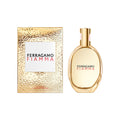How can Q-Commerce Impact the Beauty Industry?

Just a few weeks ago the landscape of D2C changed, you can now go online or on your application and order your favorite deodorant or match your hair color to the nail paint, pretty much any Beauty need, and all of this in just under 30 minutes. The most fascinating part is that this was not available a month back from an exclusive beauty application like Nykaa! The advent of Q-commerce is leaving an inevitable mark on how we shop for anything, from groceries to makeup and skincare. Read more to understand that in today's world, nothing is surprising and all trends in technology are here to stay. One of the most important disruptors - the COVID-19 pandemic, changed how we shopped, opening up the online option as a viable one.
How Quick Commerce is Transforming the Beauty Industry
The beauty industry, known for its rapid innovation and trendsetting, is experiencing a new wave of change through the rise of quick commerce (q-commerce). This emerging retail model, characterized by ultra-fast delivery times, is poised to significantly impact how beauty products are sold, distributed, and consumed. As consumers increasingly seek convenience and immediacy, q-commerce is becoming essential to the beauty industry's evolution. Let’s delve into how q-commerce is shaping the future of beauty retail. What does the future look like for Q-commerce? The TAM for Q-commerce in India is about $45B. The current market size is around $2.8B. According to a Deloitte report, the quick-commerce market in India will be worth $40B by 2030. (Credit- https://www.linkedin.com/pulse/state-quick-commerce-space-india-what-expect-future-mtync/)
The Need for Speed: Changing Consumer Expectations
The beauty industry has always been fast-paced, with trends evolving rapidly and consumers eager to try the latest products. In the digital age, these trends move even faster, driven by social media, influencer marketing, and viral beauty hacks. Consumers today are not just looking for the next big thing; they want it immediately. This shift in consumer behavior has paved the way for q-commerce, which promises to deliver beauty products in as little as 10 to 30 minutes.
This rapid delivery model aligns perfectly with the on-demand culture, where consumers expect instant gratification. Whether it’s a last-minute purchase before a night out or an emergency restock of a favorite product, q-commerce ensures that beauty enthusiasts never have to wait long to get their hands on what they need.
Impact on Traditional Retail
The traditional beauty retail model, which often relies on physical stores and e-commerce platforms with standard delivery times, is being challenged by the advent of q-commerce. While brick-and-mortar stores still play a vital role, especially for consumers who want to try before they buy, the convenience of q-commerce is hard to ignore.
For beauty brands and retailers, this means rethinking supply chains and inventory management. Dark stores—small, strategically located warehouses—are becoming increasingly important for stocking popular beauty products close to where consumers live. By optimizing these logistics networks, beauty brands can meet the demand for faster delivery times without compromising on product availability.
Enhancing the Consumer Experience
Quick commerce is not just about speed; it’s about enhancing the overall consumer experience. The immediacy of q-commerce allows brands to create new and exciting touchpoints with their customers. For instance, personalized beauty kits or limited-edition products can be delivered directly to a consumer’s doorstep within minutes of a new product launch, creating a sense of exclusivity and excitement.
Moreover, q-commerce can help beauty brands build stronger relationships with their customers by offering convenience during critical moments. Imagine a customer running out of their favorite skincare product right before bedtime or needing a specific shade of lipstick for an upcoming event. The ability to have these items delivered almost instantly strengthens brand loyalty and enhances customer satisfaction.
Opportunities for New Product Launches
Q-commerce also presents unique opportunities for beauty brands when it comes to product launches and promotions. Traditional retail models often require significant lead time for planning and executing product rollouts. However, with q-commerce, brands can respond to trends in real time and launch products much faster.
For example, a beauty brand could leverage q-commerce to launch a trending makeup product inspired by a viral social media challenge. By capitalizing on the immediacy of q-commerce, the brand can quickly get the product into the hands of consumers, riding the wave of popularity while it’s still at its peak.
Challenges and Considerations
Despite its many advantages, q-commerce also presents challenges for the beauty industry. One of the primary concerns is maintaining the quality and integrity of beauty products during rapid delivery. Many beauty products, especially those in skincare, are sensitive to temperature and handling, requiring careful packaging and transport. Brands must invest in robust logistics and packaging solutions to ensure products arrive in perfect condition.
Additionally, the cost of implementing a q-commerce model can be high, particularly for smaller beauty brands. From setting up dark stores to managing last-mile delivery, the expenses can add up quickly. However, as the demand for q-commerce grows, economies of scale and technological advancements will likely make it more accessible for brands of all sizes.
The Future of Beauty in the Age of Q-Commerce
As q-commerce continues to gain traction, it’s clear that the beauty industry is on the cusp of a major transformation. The ability to deliver products within minutes is not just a competitive advantage; it’s becoming a consumer expectation. Beauty brands that can successfully integrate q-commerce into their business models will be well-positioned to thrive in this new era of retail.







